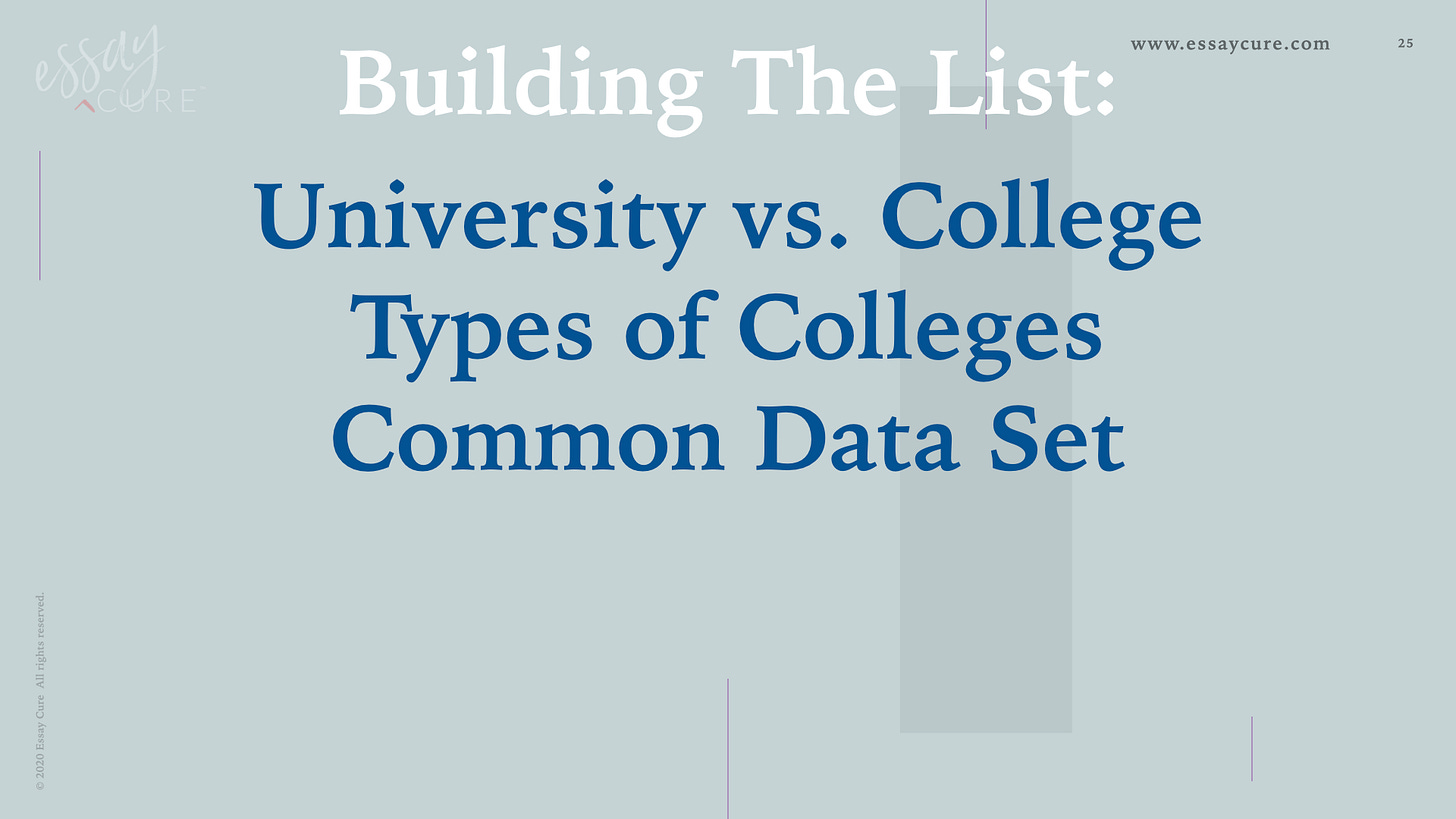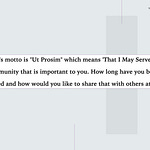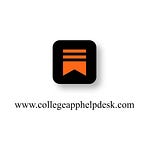The whole college application process is about students getting comfortable with selling themselves in their application as if it were an interview. What makes a student so compelling, noteworthy, and impressive that admissions officers become advocates to get you onto their campus?
The Maxwell DISC Student/Career assessment results help students do just that. Instead of students having to draw from the depths of their souls to uncover all of these details about their strengths and interests, we take it straight from this assessment. Students are often surprised to learn from their assessment that not everyone has the talents that come so easily to them.
In building a list, students can use this guide to get started: three likelies, five targets, and 1 (maybe 2! It depends on the student) unlikely.
Research is step three in the process of academic writing, but in the college application process, we do this step first because students can't write essays until they’ve identified which schools they will apply to.
Remember, there is no such thing as a “safety” school.
Students should diversify their lists to be successful in this process by using numbers from the Common Data Set to identify schools that would be a good fit socially, emotionally, academically, and financially.
High School diploma or GED
Associate’s degree = 2 years
Bachelor’s degree = 4 years
Master’s degree = advanced (graduate) degree
Doctoral (or PhD) degree = the highest (graduate) academic degree awarded by universities
Q: What’s the difference between a college and a university?
A: Universities have undergraduate and graduate degrees. Universities generally offer a wider array of academic disciplines and specializations and tend to focus on research. Universities might have more rigorous admission requirements than colleges.
Typically, universities include multiple colleges and schools, which can sometimes confuse students. A university may have, for example, a “college of business” which is a smaller college within the larger university that focuses solely on the education of undergraduate students.
A: Colleges tend to focus on undergraduate degrees and typically offer smaller, more intimate classes. Colleges prioritize a more holistic approach to admissions, so they're going to consider things about you beyond just your academic achievements.
In casual conversation, “college” can be used to refer to any post-secondary institution, including both colleges and universities. However, “university” is a more specific term referring to institutions with graduate programs.
Q: What should I consider when building my list?
A: Degree Programs = universities offer bachelor’s master’s, doctoral, & professional degrees (like law or medicine); colleges tend to focus on undergraduate degrees & may even offer associate’s degrees
Size & Structure = large institutions vs. more intimate classes
Research & Scholarship = universities often have strong emphasis on research
Flexibility & Specialization = universities may offer wider array of academic disciplines and specializations; colleges may be more focused on a specific area or have fewer specializations
Admission Requirements = universities may have more rigorous admission requirements than colleges; colleges often prioritize a more holistic approach to admissions, considering various factors beyond academic achievements.
Q: What are some of the types of colleges I should research?
A: Research Universities = tremendous focus on research & brand name
Regional Universities = do not focus on research, may not offer PhD
Liberal Arts Colleges = private, typically focused on undergraduates
Jesuit Colleges = 28 nationwide committed to academic excellence, service, leadership, & caring for the whole person
Specialty Colleges = focus on one area of expertise such as art, music, business, or engineering
Colleges That Change Lives = smaller, liberal arts colleges that focus on educating undergraduates with collaborative learning approach
Ivy League = 8 private colleges located in the Northeast with need-based financial aid policies that use “institutional methodology” to determine need; middle-income families are surprised by the generous financial aid offers from these schools. These are some of the most competitive colleges in the world.
In-State = tuition rate offered to students who are residents of the state where the college or university is located is lower
Out-of-State = students who live outside the state where the college or university is located typically pay a higher tuition rate because they haven’t contributed to the state’s tax revenue that helps fund the institution
Private = not funded by tax dollars, so do not differentiate between in-state & out-of-state students
Specialty Colleges = focus on one area of expertise such as art, music, business, or engineering
Colleges That Change Lives = smaller, liberal arts colleges that focus on educating undergraduates with a collaborative learning approach
Q: What is the Common Data Set?
A: The Common Data Set is a standardized set of questions & definitions used by higher education institutions to collect information for college guidebooks & other publications. Its purpose is to make it easier to compare institutions & find the right fit for students by comparing content such as general information, enrollment, admissions, academic programs, student life, expenses, and financial aid.
College guidebooks, U.S. News & World Report, and the College Board all use the Common Data Set. It’s developed and reviewed by experts, data providers, & feedback from users. This improves the accuracy and comparability of data and provides a more comprehensive view of higher education for students and parents.
Q: How do I find the Common Data Set?
A: Google = the easiest way to find a college’s CDS is to simply Google the institution’s name along with “Common Data Set” — for example, searching “Harvard Common Data Set” should lead you to the document
College or University Website = Most colleges and universities publish their Common Data Set on their official website, typically within the “Institutional Research” or data section
CDS Repository = Websites like the College Transitions Common Data Set Repository may have archives of previous years’ CDS documents for numerous institutions
IECs = high school counselors or educational consultants
Students may have access to SCOIR or Naviance through their high schools, and Common Data Set information will be available there. Students can also find this information at collegedata.com, niche.com, and collegeboard.org.
Here are some resources to help students get started in this process:
Use Big Future to explore colleges
The College Admissions Process Podcast
Relevant podcast episodes: Inside the Yale Admissions Office and Admissions Beat from Dartmouth
What they’re looking for: MIT, UVA, CalTech, Georgia Tech
Worried about tuition? Here’s a simplified college cost estimator.
Find scholarships & grants: Unigo.com
A unique way to search for schools: College Express
One-stop shop: College Data
Virtual experience Platform: YouVisit


















